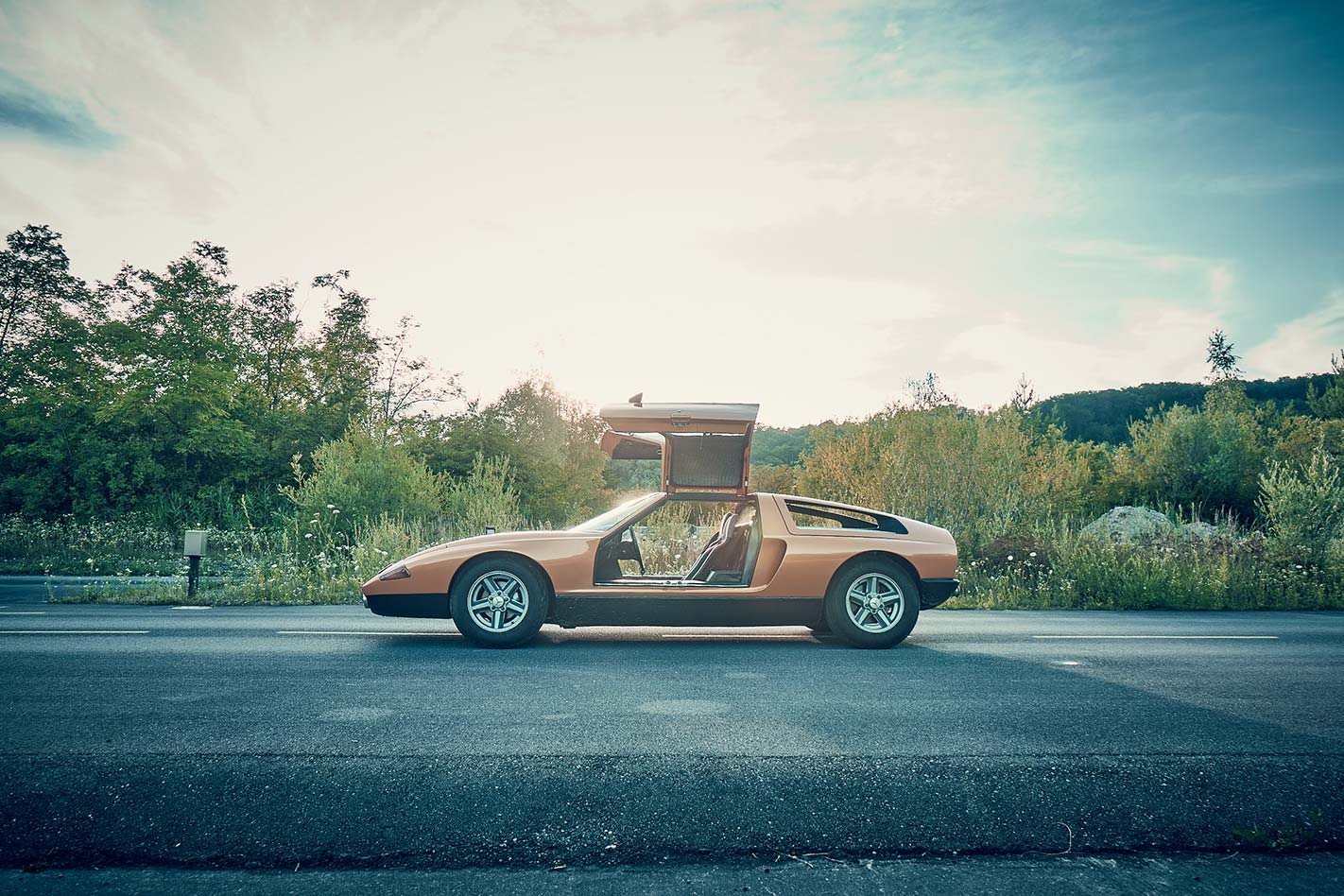This story was first published in Wheels January 2017. This week is the 50th anniversary of the C111 concept’s global unveiling. To celebrate, we are looking back at when Peter Robinson was let loose in one of Mercedes-Benz’s rarest and most valuable prototypes with a single clear instruction: “Go as hard as you dare…”
“IT’S like a modern car,” says Rene Olma, pointing to the C111. “You can drive it as you want on the road.”
“Are you sure?” I respond, disbelieving, “In the rain?”
Olma, the head of communications for the Mercedes-Benz Classic division, smiles and tells me Auto Motor und Sport, Germany’s leading motoring magazine, recently ran the 46-year-old Mercedes classic through its contemporary road-testing process in a genuine comparison with today’s SL.

During the 18 months planning for this story, I always asked if this drive of the C111 could take place on Mercedes’ famous Unterturkheim test track inside the huge Stuttgart works. Only when we arrive at the M-B Classic workshops does Olma tell me that’s impossible; the track is in constant use testing R&D department prototypes. The alternative is another, smaller Mercedes durability track south of Stuttgart, and to spend the rest of the long summer day on the fabulous roads in the Swabian Alps to the east.
Far from being disappointed that the heavily banked track is off-limits, I’m thrilled at the chance to try the striking, copper-gold (the stylists called it “rosé wine”) gullwing coupe in real-world conditions. And also a little anxious. The C111, one of just 14 (of which 11 survive) is insured for something close to $10 million.
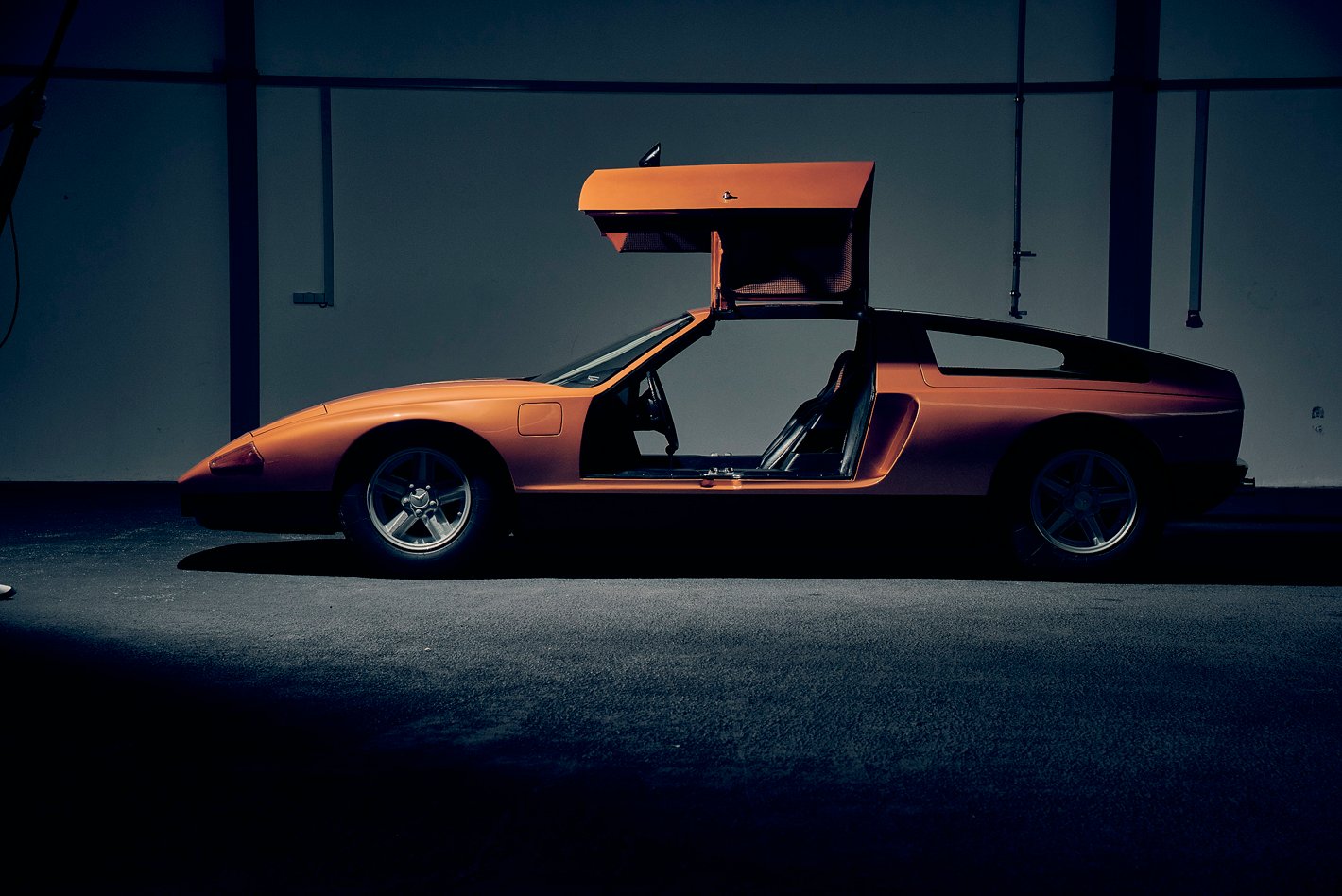
Before setting off, let me tell you something about the C111 (pronounced C-one-eleven).
It was introduced at the 1969 Frankfurt motor show as an “experimental sports car” to test various engineering ideas, most notably a radical Wankel engine for which Mercedes had a development licence, but also: a new multi-link rear suspension (eventually to replace Mercedes’ normal semi-trailing arm system) and front suspension; the mid-engine layout; an anti-lock brake system; and a tube-style frame welded of sheet steel, rather than the backbone-style construction then in favour. It’s a layout that’s essentially similar to the Ford GT40.
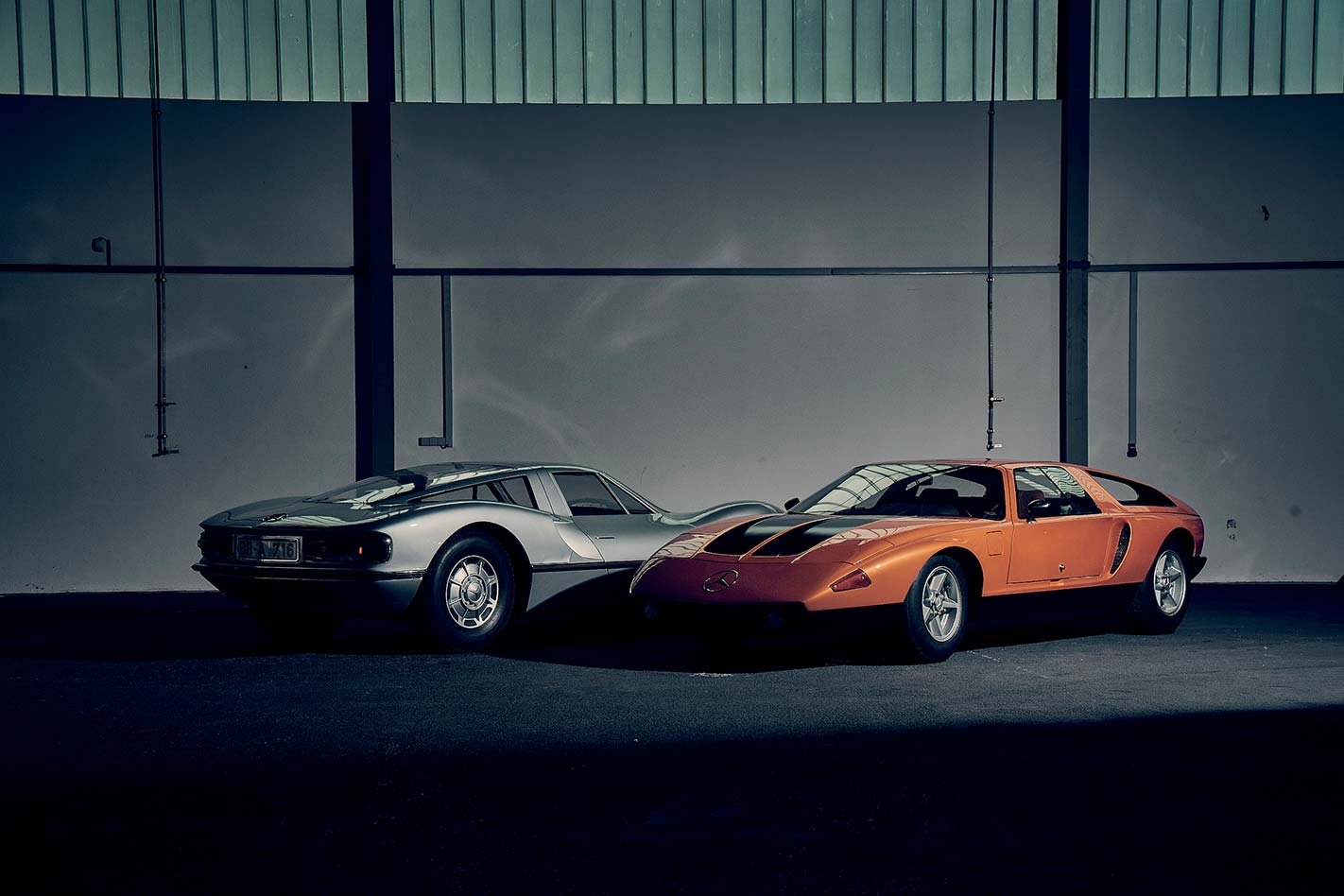
Mercedes had played with a mid-engine supercar in the mid-1960s, but Bruno Sacco, soon to be head of design, criticised the awkward, American-ish Paul Bracq design; with the approval of his boss, Karl Wilfert, Sacco initiated a new and very wedgy design.
With its fibreglass/plastic body styled by Joseph Galitzendorfer, the C111 proposal took Mercedes design in a totally new and creative direction. Clean, elegant and aerodynamically efficient (Cd 0.33), the still beautiful and timeless, wildly expressionist styling proves there were many at Mercedes who saw this car as far more than a test laboratory. It was to be a modern 300SL, a mid-engine gullwing supercar to rival the Lamborghini Miura and Ferrari Daytona in performance and appearance, and to combine these qualities with typically Teutonic practicality and superior handling and roadholding.
It was also small at 4440mm long, 1825mm wide and just 1120mm high, about the size of today’s Porsche 911, but with much shorter overhangs. Rudi Uhlenhaut, Mercedes’ great test development engineer, undoubtedly set out to build the world’s best sports car.
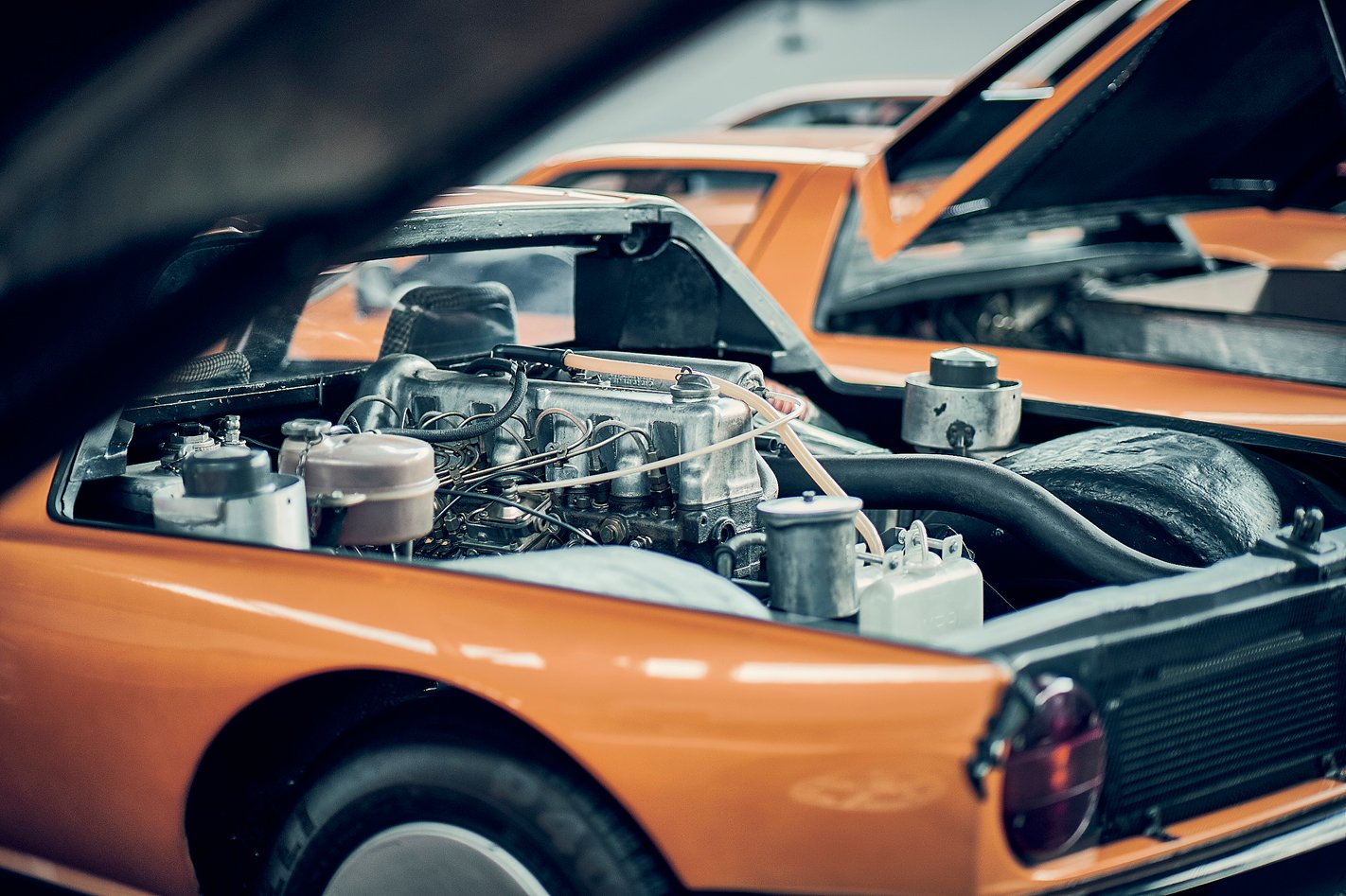
Customers and the press were impressed with the original 206kW three-rotor car, but it was the 1970 version, with a 275kW four-rotor engine, that brought a massive performance increase – top speed 285km/h and 0-100km/h in 4.8sec, brilliant for the era. Combined with a lower waistline and larger windows, buttresses that sweep back from the reinforced roof, and gullwing doors that opened to improve visibility, it had around 500 people queuing up, cheque books open, to order the car. It was not enough.
An initial run of 50 cars was hinted at by the motoring press. Eventually, in 1973, durability issues with the rotary engine, crash test security with the gullwing doors (what if the car should roll?), difficult egress and potential emission problems saw the Mercedes board veto a production version, by a margin of just one vote.
Now, rain falling, I’m about to be trusted with the gorgeous C111 in Stuttgart’s dense traffic.
Compared with today’s supercars – with vents, ducts, wings, spoilers and splitters on every surface – the overall impression is precise, minimalist even, almost delicate. The blacked-out areas, uncluttered rear treatment with a blacked-out grille enhanced by simple round red tail-lights, evoke understatement and design refinement. Only the high-profile (215/70 VR15) Michelin tyres and pop-up headlights betray its age.
Minder Matthias Chwal, the mechanic who rebuilt the car when M-B Classic decided they wanted a reliable and fully functional roadgoing C111, opens the wide gullwing door.
Watch your head on the lower edge of the door, slide across the expansive body sill, being careful to avoid the greasy, single, centre door lock in the sill, and you find a perfect driving position. Long before the BMW M1 and Honda NSX, Mercedes created a user-friendly supercar. It is so much more practical than the Italian supercars of the era. None have ever been sold, though, which plays a big part in the C111’s mystique.
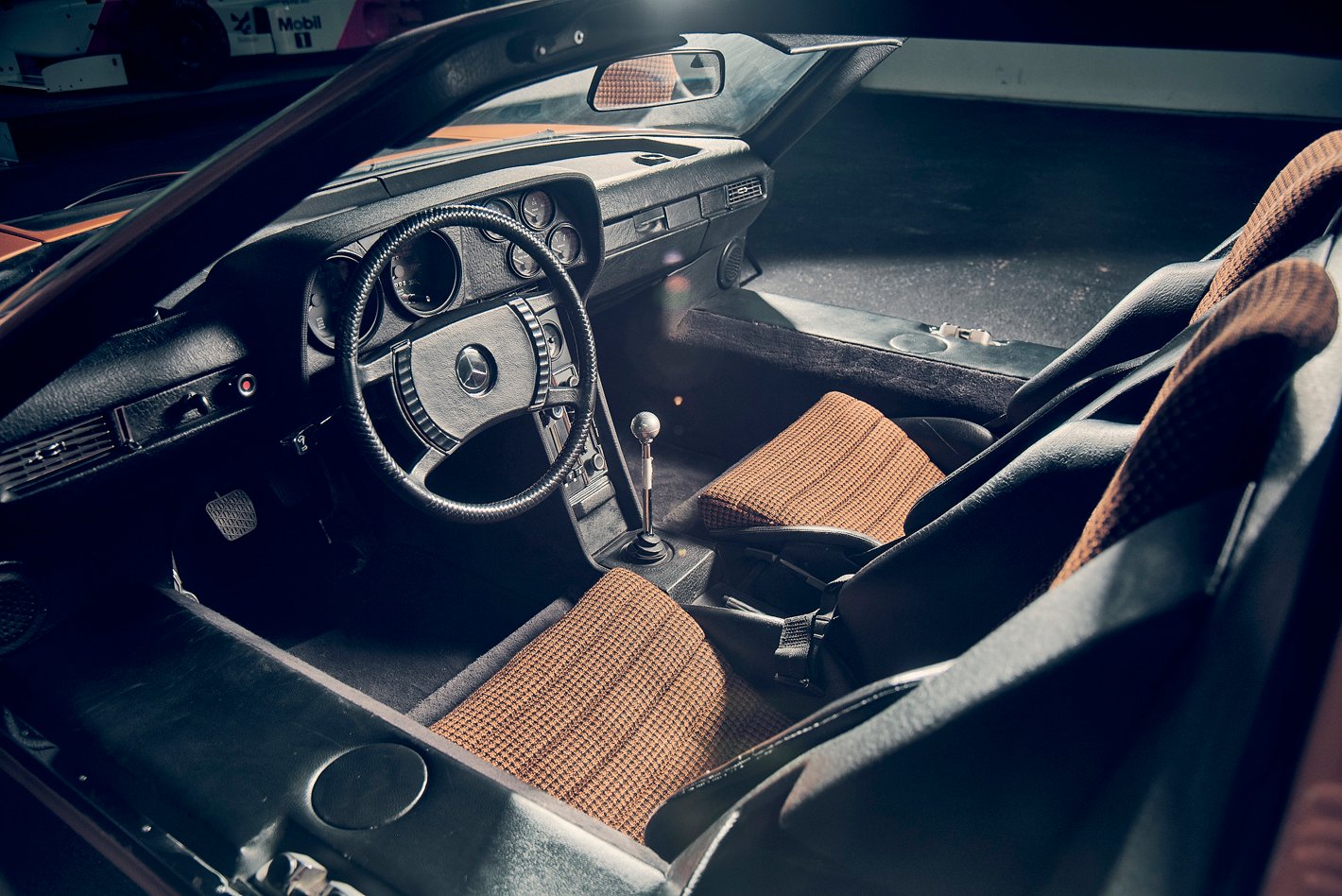
The huge four-spoke black steering wheel is straight from the S-Class, pedals offset just a little to the left relative to the wheel. The dashboard (and the wheel), switchgear and controls are from production 1970 Mercedes cars, the fashionable houndstooth cloth buckets supportive and comfortable. The huge windshield is striking, providing exceptional forward visibility. The windscreen’s leading edge reveals the tell-tale sign of one of the world’s first integrated radio antennas. The period V8 now installed to keep the car realistic was developed for the R107 350 SL.
This once experimental prototype is production-ready, with a working historic and vertically installed Becker radio, air-conditioning and full set of gauges. Even the inside of the glovebox is finished, in leather.
There’s a note stuck on the dash that suggests a 120km/h maximum speed. However, despite the car’s value, I’m told to ignore it.
Turning the key and hearing that V8 fire is bliss. It’s a bit lumpy initially, but soon settles to an even rumble. The tacho’s crudely painted redline is at 6500rpm, though the numbers run up to 10,000rpm, an obvious indication it was intended for the Wankel engine, which was governed to cut the fuel supply at 7500rpm.
To take off, you push a button on top of the gear lever to select the dog-leg first gear (or reverse) on the ZF five-speed transaxle (as used in the DeLorean DMC-12). From second to fifth gears, the shift is via a standard H-pattern.
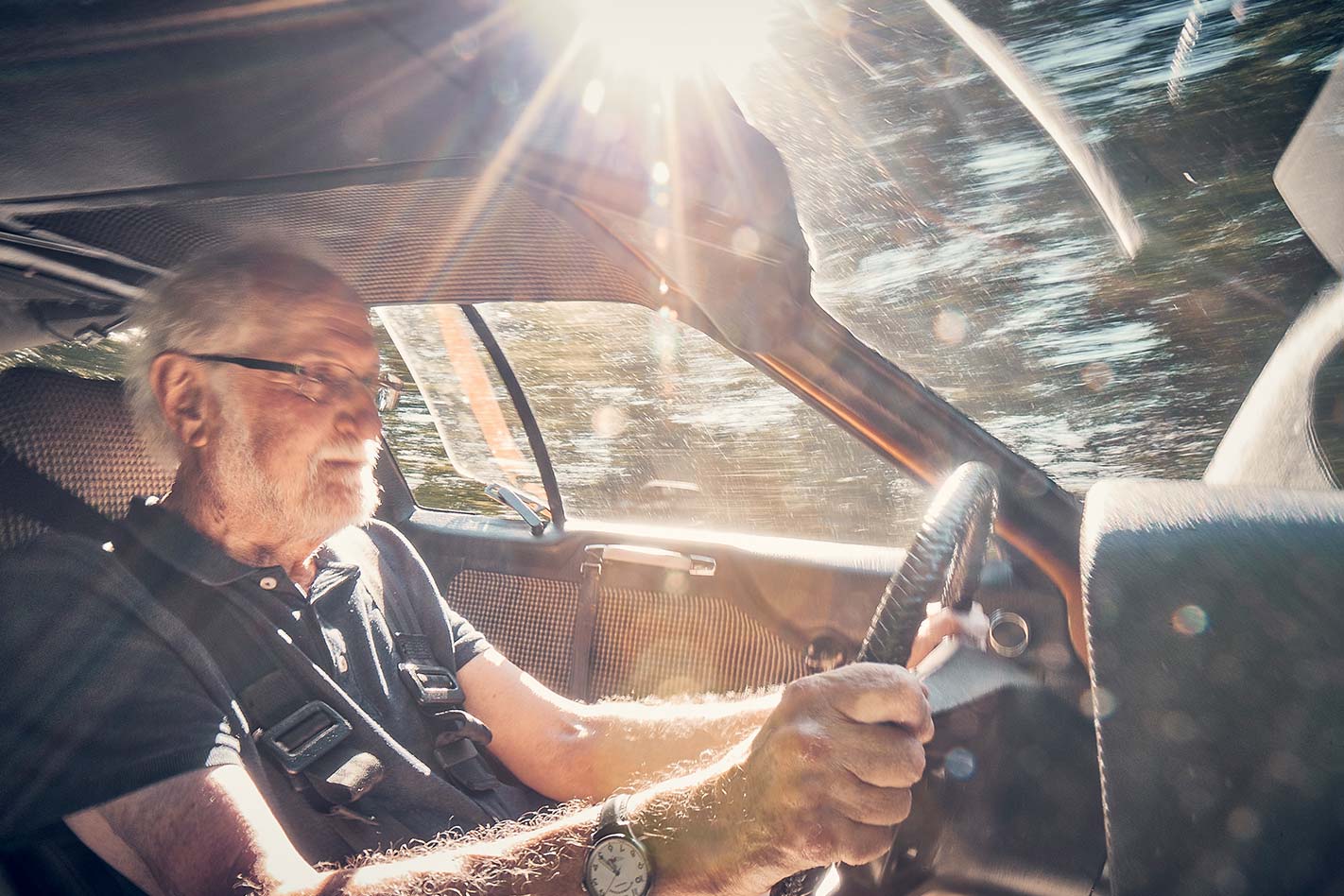
By modern standards, the C111 is brisk rather than fast, and needs plenty of revs to overcome a lack of low-end torque. Best to keep the bent-eight in the 3500-5000rpm range, which means frequent use of the gearbox, learning to deliberately hesitate for a brief moment on shift across the H-gate as you change gears.
In four-rotor form back in 1970, the C111 must have felt ridiculously fast. Yet the ride is beautifully composed and the new suspension’s anti-dive geometry, which would make it on to all production Mercedes cars, really works, though there is bodyroll in tight corners. The brakes, the same vented four-wheel discs developed for the 300SEL 6.3, are strong, progressive and reasonably weighted.
The one area where the C111 fails by contemporary standards is in its steering behaviour. At anything below 40km/h, the steering is so heavy it demands strong-arm tactics and feels ponderous. At parking speeds it requires a massive effort to move the front wheels. The trait of quickly loading up as you turn the car into corners exaggerates the car’s understeer because slow corners demand far more lock than you initially feel is needed. And because there is nothing in the way of self-centring, the wheel must then be wound back to a straight-ahead position as you exit.
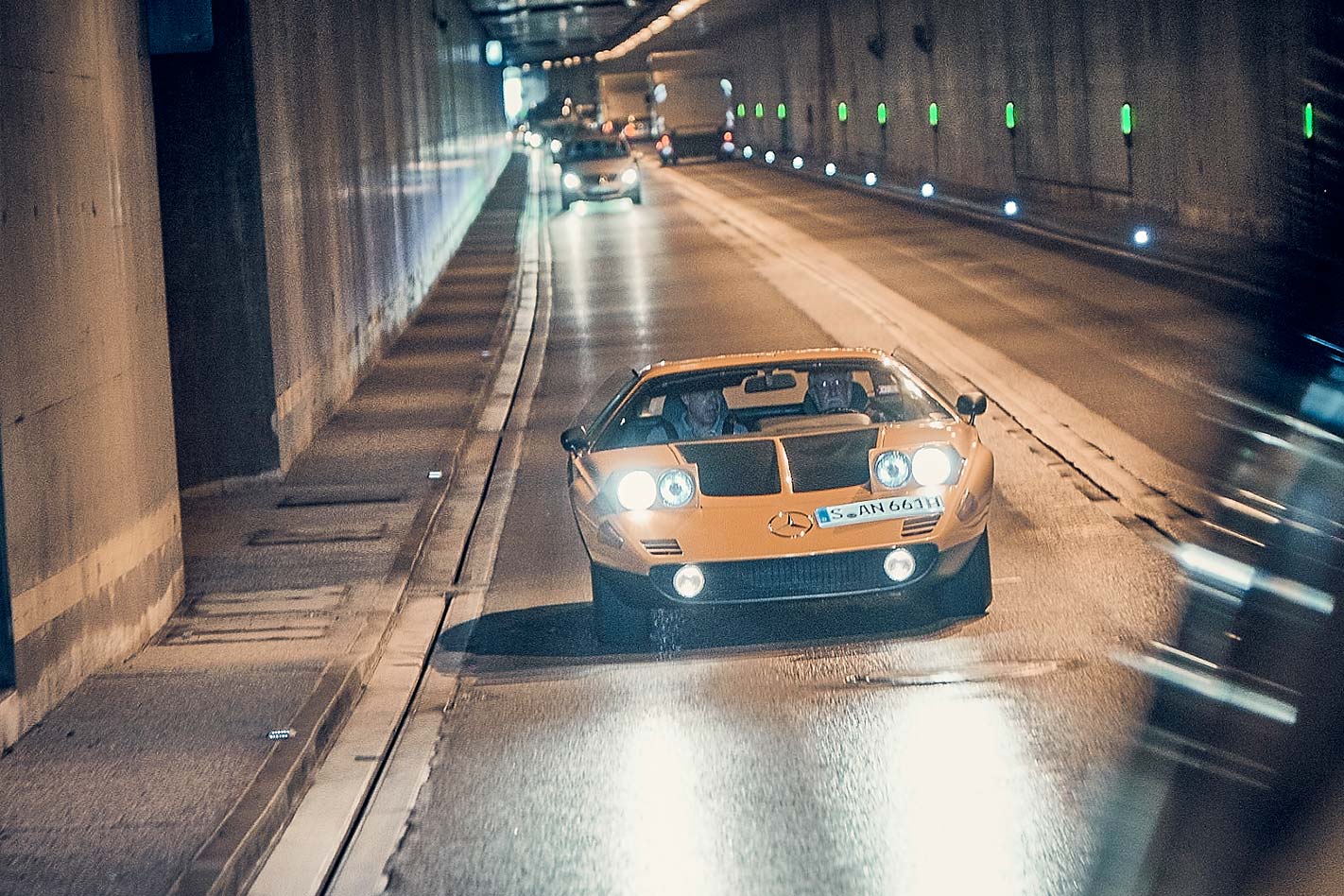
Two things here: It would have been easy for Mercedes to fit a production C111 with hydraulic power steering; second, at 3.75 turns, the steering is far slower and less direct than modern cars. For the mid-engine supercar, Mercedes stayed true to its experience and fitted a traditional recirculating-ball system. No pin-sharp rack-and-pinion system, then beginning to appear on most of its rivals, for the C111.
The transformation in the steering on winding country roads is both welcome and a real surprise. As the steering lightens it also feels far more direct and accurate at the straight ahead. It even develops self-centring out of corners, the whole car coming alive, encouraging the driver to attack corners and straights. Yes, you can drive this car hard, as hard as you dare. Now it is light on its feet and even feels agile.
I’m learning the car and road as I run the C111 back and forth for the photographer. Stretching the V8 out to 6000rpm, I can’t believe my confidence levels – especially given its value – as the Mercedes is flung around, balancing its attitude on the throttle, even as all the engine’s power is delivered to rear wheels that take 55 percent of the car’s weight. The whole car, so obviously thoroughly developed, displaying Mercedes’ accepted Fort Knox impregnability in all its 1260kg, feels utterly self-assured and stable with a harmony that was unheard of in its contemporary rivals.
From my enthralling day at the wheel, it’s clear the C111 was created by engineers who knew how to drive and understood what it took to make a car decently fast and immensely rewarding to drive, at least away from suburban speeds. A production C111 would have elevated supercar standards to an all-time high.
No doubt there was great relief in Modena when the Italians learned that Mercedes didn’t plan to produce C111s. At the time, Mercedes’ 3.5-litre V8 was not sufficiently powerful, and the brutal 6.3/6.9 V8 was simply too heavy if the car was to maintain the balance achieved with the Wankel. As a result, through the troubled 1970s with its two energy crises, Mercedes ignored supercars and it wasn’t until more than a decade later, with BMW on the march, that Stuttgart dared to think of genuine high-performance sports cars.
In 1991 Mercedes showed the mid-engine C112, effectively its answer to Jaguar’s XJ220, but the heavy-handed, almost ugly design was still-born.
It would be another decade before Mercedes returned to the supercar with the front-engine Mercedes-McLaren SLR, supposedly inspired by the 300SLR Uhlenhaut coupe. It, too, didn’t sell or drive as well as expected. Then came the also gullwing SLS AMG and in 2015 the GT, each staking a claim to be a successor to the original, though without displaying the engineering and design creativity of the exquisite C111.
I can appreciate and accept the reasons why Mercedes-Benz didn’t build the C111, but that doesn’t make it any less disappointing. Not when it looks so close to perfection. Forget the Lamborghini Miura and de Tomaso Mangusta, this might have been the best-looking sports car of all.
Out with the four rotors, in with eight cylinders
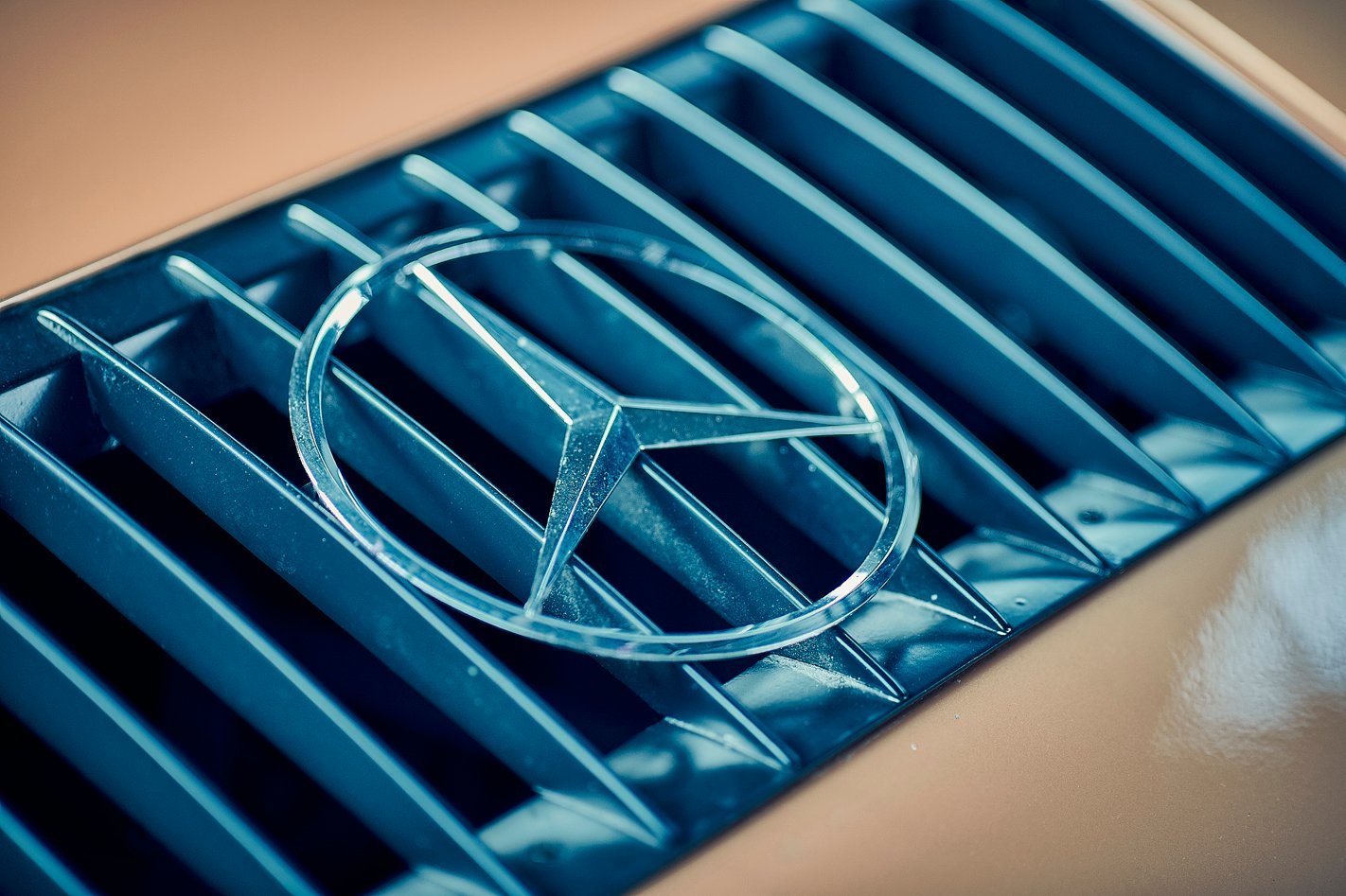
Knowing Mercedes-Benz planned to show the Intelligent Aerodynamic concept at Frankfurt in 2015, M-B Classic proposed that a C111-II be rebuilt because of its role in aerodynamic development 46 years earlier. The idea was to use the car for static displays as well as participate in driving excursions and Mercedes’ global Fashion Week events.
They exchanged the irreplaceable Wankel engine for a more reliable M116 3.5-litre V8 from the same era, requiring only minor modifications to engine mounts. All the mechanical aspects were restored or replaced, with the emphasis on steering, brakes, springs and dampers. Six-point seat belts were installed to match the period seats, and a fire-control system (essentially to meet classic car racing safety regulations). But it remains absolutely faithful to the appearance and originality of the second-generation C111 as unveiled in Geneva in 1970.
A 10,000-mile record breaker
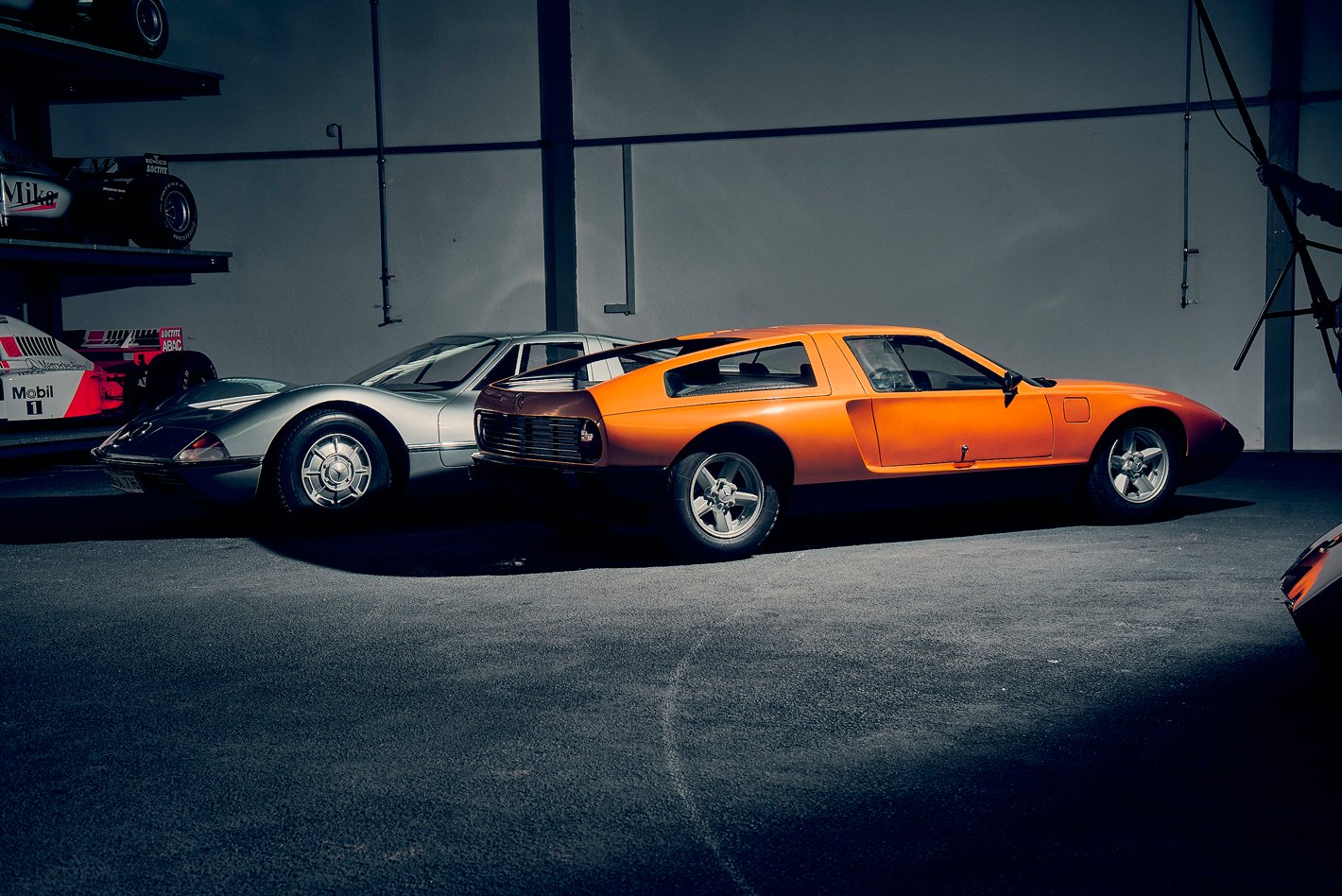
For a decade from its 1969 launch, the C111’s role was as a “continuing research car” for Mercedes-Benz, gaining first a fourth rotor, switching to a turbocharged diesel engine, and finally ending its development career in 1979 with a turbocharged 4.8-litre V8 petrol. Along the way, the diesel and V8-powered cars set speed records, including averaging 251.798km/h over 10,000 miles, which stood for 25 years. All were overshadowed by the C8 C111 IV’s record of 403.978km/h in one fantastic lap of the Nardo speed bowl in Italy.

